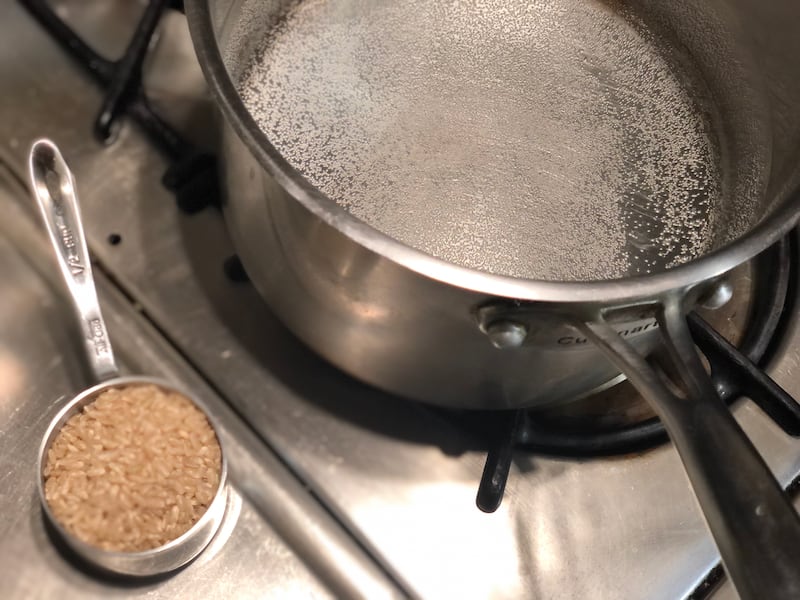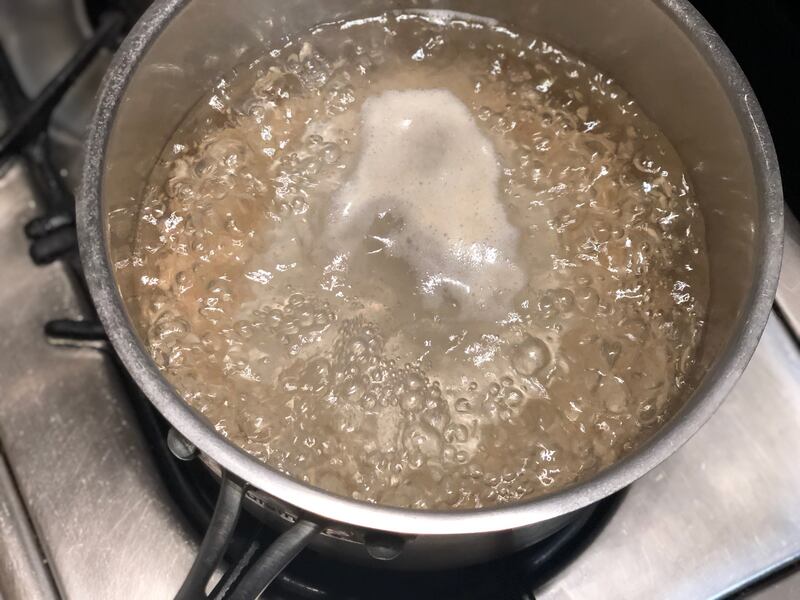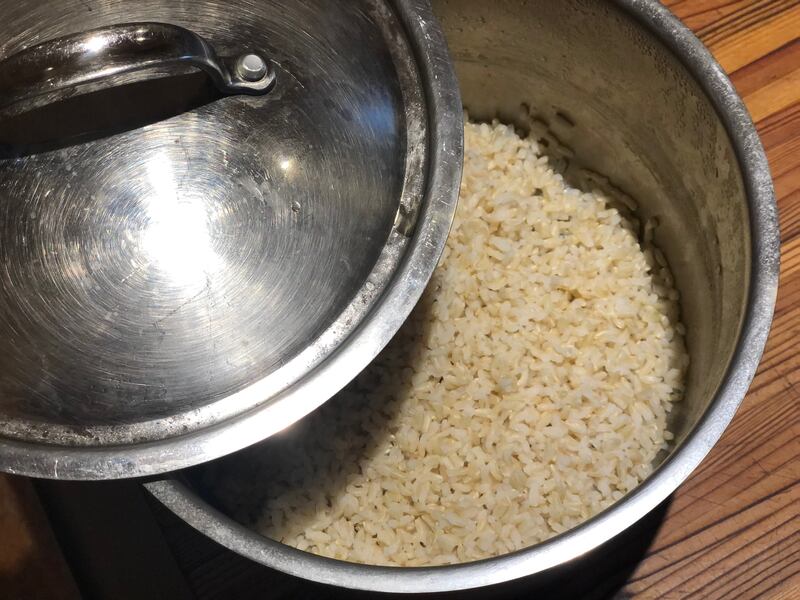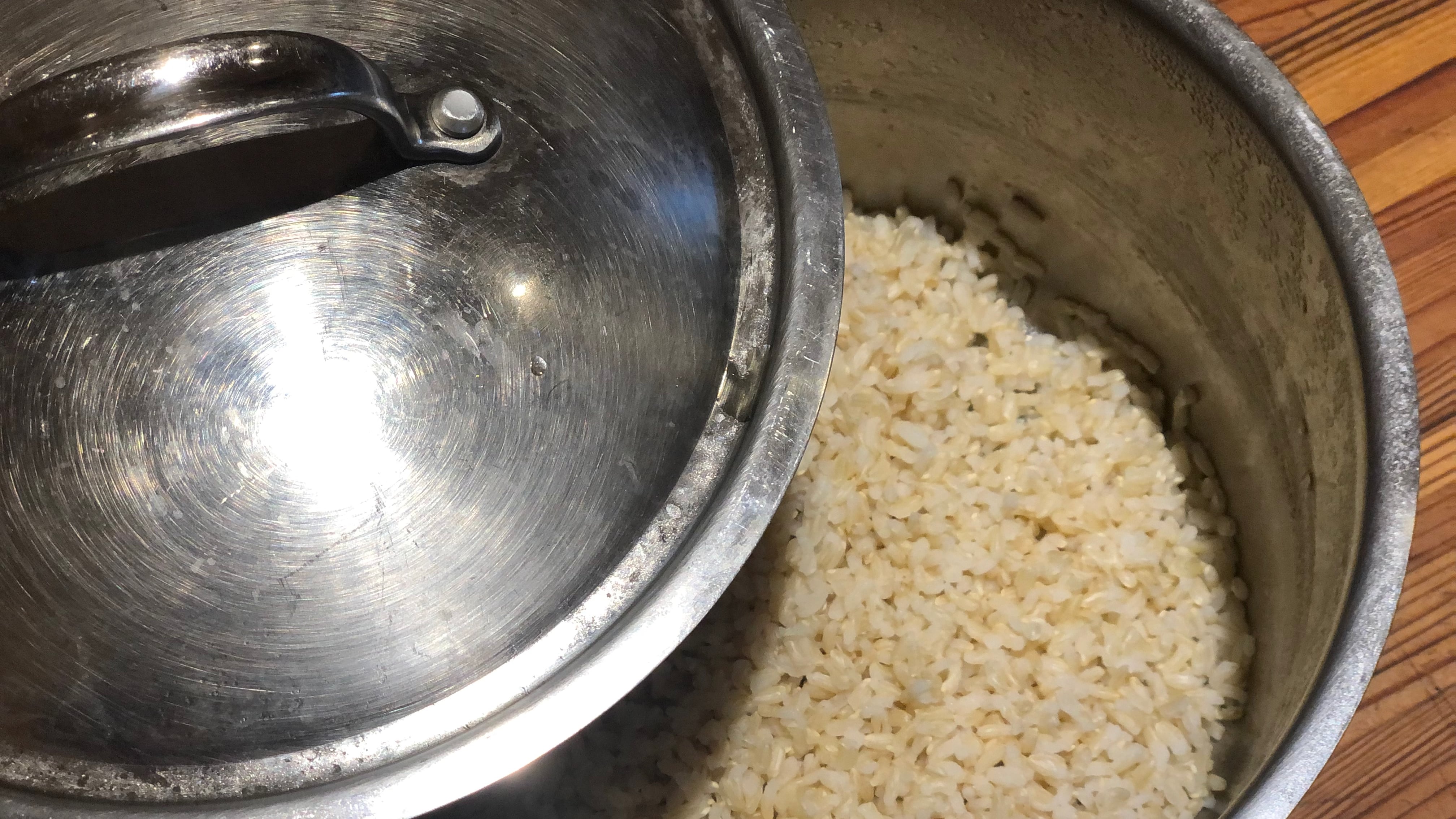Jim Dixon wrote about food for WW for more than 20 years, but these days most of his time is spent at his olive oil-focused specialty food business Wellspent Market. Jim’s always loved to eat, and he encourages his customers to cook by sending them recipes every week through his newsletter. We’re happy to have him back creating some special dishes just for WW readers.
If you can’t cook a pot of rice, you’re not alone.
Combining the world’s most popular grain with just the right amount of water, going from the roiling boil to a gentle simmer, and taking the covered pot off the heat at just the perfect moment to yield a fluffy, tender texture is tricky. It’s why so many cooks use automatic rice cookers, but even those sometimes give you watery mush or burnt rice, and if you’re working in a small kitchen, they take up considerable space for a single-use appliance.
There’s a better way. Cook your rice like pasta. Just get a big pot of water boiling, dump in the rice, and wait. You only need to remember one number: The minutes it takes to cook the rice. The rice-like-pasta method also cooks rice faster since each grain is immersed in the boiling water and emerges fluffy, tender, and separate. Here’s how you do it.
Since 1 cup of uncooked rice yields 3 cups cooked, you may want to measure the rice, or at least eyeball it (pour 1/2 cup into your hand so you know what a handful looks like). I use a 4-quart saucepan I fill about halfway to the top (that’s roughly 2 quarts for the math avoiders) to cook 3 handfuls of rice, or about 1½ cups. I add a pinch of salt, but that’s a personal choice.

Get the water to a rolling, vigorous boil. Add the rice, give it a stir and let it come back to a boil. Reduce the heat slightly but not enough so that the water isn’t bubbling merrily—what’s sometimes called an “active boil.”

If you’re cooking white rice, fish out a few grains after about 7 minutes and try them. You’re looking for rice that’s tender, with no bit of hard center, but not too soft, or just shy of being done. White rice typically gets there after 8-10 minutes. I usually make brown rice since it’s got all the bran and other nutrients from the hull (white rice is typically fortified to make it more than just empty carbs). So I test the rice after about 30 minutes.

When the grains are to your liking, drain the rice. A fine mesh strainer works best, but a colander is OK if you don’t mind fishing a few errant grains that slip through the holes out of the sink. I usually pour the water off by very slowly tipping the pot into the sink. It’s a good exercise in patience; pour too fast and the rice slides out, too.

Once the rice is drained, cover it (put it back into the cooking pot if you used a strainer), give it a shake or toss it a little, put the lid on, and let it rest for about 10 minutes. The residual heat will keep it steaming and finish the cooking process.

